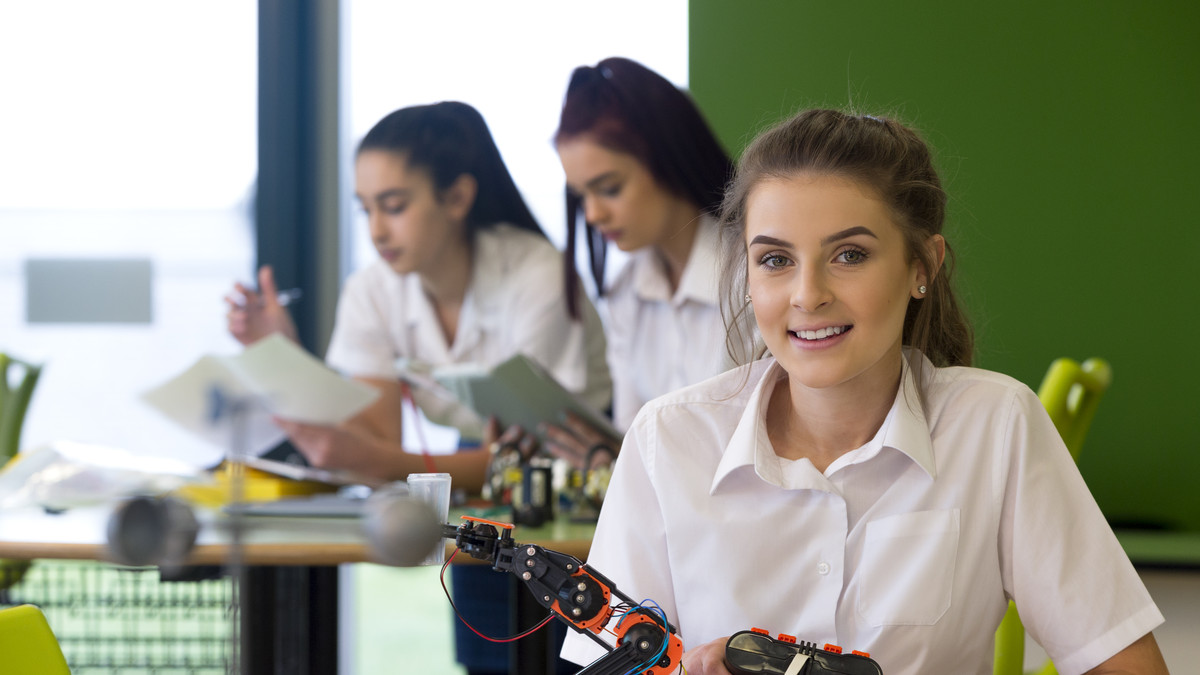Savvy school districts are constantly looking for ways to prepare their students for the future workforce—and usually that means adoption of leading-edge technology. From video tech to classroom gadgets, teachers need to anticipate a new way of improving the learning experience. Read on to see just a few transformational trends in action from The Dayton Daily News.
Area school districts are entering 2019 with new plans for digital tools and learning options that will continue to affect how thousands of students access their information and how teachers adjust to them.
Later his month, for example, the county’s largest school district — the 16,500-student Lakota Schools — will take its latest digital learning leap by handing out laptops to all of its students at Lakota East and Lakota West high schools in a sweeping high-tech experiment in non-traditional learning.
In the fall, Lakota became the first major school system in Southwest Ohio to provide specially designed learning laptops to all its junior high students.
And in December, Lakota announced the creation of its first “Cyber Academy” program designed to train and certify participating high school students for jobs, careers and college study preparation in America’s booming cyber security software industry.
“It’s another way we are preparing our kids for the future,” said Lakota Superintendent Matt Miller, who made a name for himself during a 2016 TEDx speech in San Diego — still available on YouTube — during which he shoved a stack of textbooks to the ground to show the dated inadequacy of print-based learning.
Middletown continues to enhance its learning programs to incorporate digital and virtual reality instruction with its $96 million new middle school and renovated high school that both include state-of-the-art technology learning tools housed in modern classrooms.
Nearby, the 10,000-student Hamilton district is expanding its internet-based learning programs for students by assuring that every student has guaranteed access to computers and laptops during the school day for research and learning.
And students aren’t the only ones affected, as teachers too are using real-time data on student performance to adjust instructional resources to improve learning. Monroe Schools recently won honors from the Ohio Department of Education for its upgraded, data-based approach by teachers in monitoring student progress.
“Technology exists in every part of our culture; it is where we live, work, play and, most importantly, where we learn. And students are able to experience a personalized and meaningful learning experience because of it in the Hamilton City Schools,” said Tricia Smith, director of technology and e-learning.
Lakota’s planned distribution this month of learning Chrome Book laptops to high school students, who will be able to take them home, “is an opportunity for our kids to take more ownership of their learning and give them the skills they will need to be successful when they graduate,” Miller said.
Almost every aspect of future employment — and post-secondary schooling — will require some degree of proficiency in learning, performing, sharing and producing information using computerized digital programs, officials said.
It’s imperative for schools to incorporate new learning technology and to do it quickly to better the chances of graduates of competing and prospering as adults, said Hamilton Schools Associate Superintendent Mike Holbrook.
“The transformation of educational technology in Hamilton gives students a personalized learning platform, creative and pragmatic hands on lab experiences, and skills to compete in a global technological job market,” Holbrook said.
The prevalence of digital learning varies widely per local school district as a reflection of local leadership decisions, local budgets, state and federal grants and private industry partnerships. Lakota Schools is the largest suburban district in Southwest Ohio with the eighth-largest enrollment in Ohio.
Lakota’s Cyber Academy, which now joins Cincinnati Public Schools as only the second such program in the region, is being funded through a new partnership by the international Belcan corporation, which has one of its headquarters in Hamilton County’s city of Blue Ash.
The district’s annual budget of $214.5 million is the largest among Butler County’s 10 school districts.
Some, like Middletown Schools, are hustling to make up for past years’ lagging start and limited resources. Middletown is gaining momentum in large part because its new superintendent, Marlon Styles Jr., is making digital instruction a top priority, officials said.
“Our digital transformation is under way as we will complete our goal of providing every student grades 6-12 with access (during school) to their own laptop,” said Styles, who was named one of America’s “Top 30 Technologists, Transformers and Trailblazers” by a national school organization in 2017.
“Technology — along with innovative extended learning areas in our renovated high school and new middle school — is giving students access to opportunities to communicate, collaborate, problem solve, and demonstrate their learning in never been seen before ways.”
